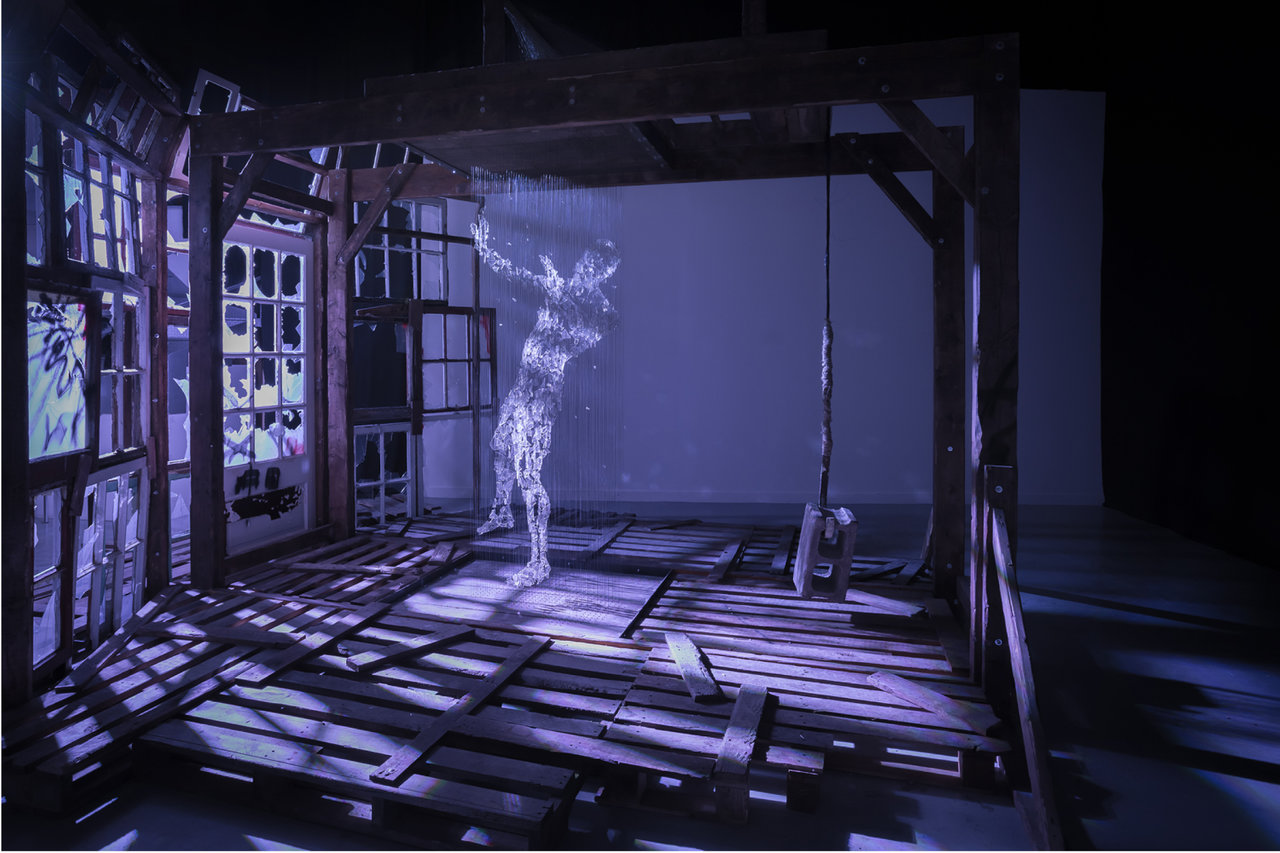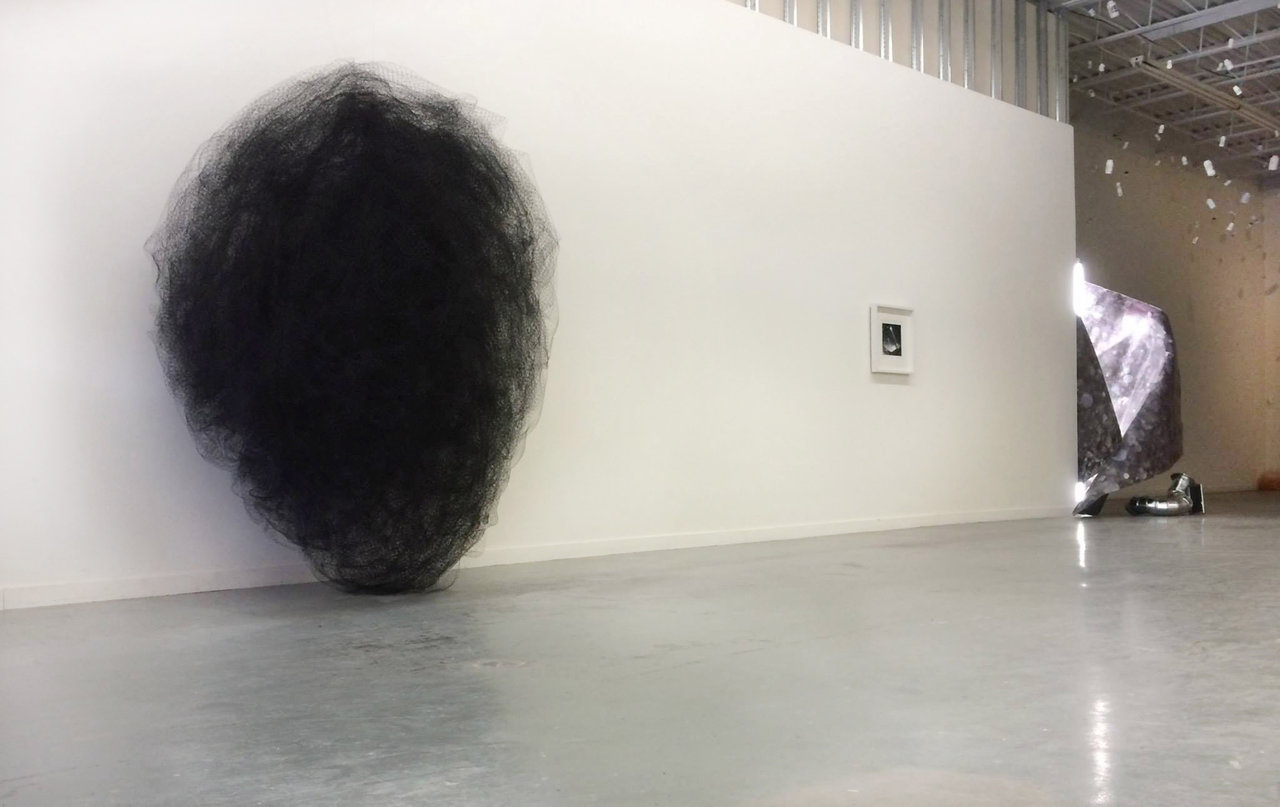 Robert and Roberta Kananaj in front of their gallery, summer, 2016
Robert and Roberta Kananaj in front of their gallery, summer, 2016
Interview with Robert Kananaj by Emese Krunák-Hajagos
EKH: You opened your gallery on Bloor Street West close to Lansdowne five years ago, in July 2011. What have you learned during these 5 years? What would you do differently now?
RK: After five years, Roberta and I know that the gallery has a life of its own; we are still learning to serve it. We have learned many things that we had anticipated, and some things that we had not. The concept of the gallery as resembling the artist’s studio remains one of our lessons.
The virtual on-line experience is still far apart from the experience of being physically in the gallery, and we still have room to improve in documentation of the gallery’s activities.
 Garbage Heaven, May9 – June 29, 2014. Courtesy of Robert Kananaj Gallery
Garbage Heaven, May9 – June 29, 2014. Courtesy of Robert Kananaj Gallery
EKH: Then you moved down to St. Helens Avenue right beside to the galleries of Clint Roenish and Daniel Faria. I remember how optimistic you were. Now there is TPW too and MOCCA is moving just two streets from you. It seems like the area is becoming an artistic hub. Does that benefit you in any way?
RK: In the two years since we moved, St. Helens has developed into a destination for people who want to explore Toronto’s artistic potential. We still get plenty of casual walk-in traffic, moreover the gallery benefits when visitors, whether local or international, are less random and more targeted. In return, visitors benefit from one location with a number of diverse galleries offering a wide range of experiences.
 Opening Reception of the Fourth Anniversary exhibition, July 16 – Augustus 29, 2015. Courtesy of Robert Kananaj Gallery
Opening Reception of the Fourth Anniversary exhibition, July 16 – Augustus 29, 2015. Courtesy of Robert Kananaj Gallery
EKH: You are a risk taker in selecting your artists. I understand that the Istvan Kantor mural greatly irritated your neighbours but you stand your ground. Most of your artists are young, with unique – sometimes challenging – agendas. They also come from all over the world. How do you find them?
RK: Art is not always for comfort. Artists who work and show with us are meeting the challenge of the gallery’s discomforting side. We started from scratch, but from the outset were open to a broad spectrum of artists – young and emerging to senior and established. The gallery-artist relationship appears to both as a dialogue between people; the artist and the gallery select each other.
 Istvan Kantor in his show, Etude to Asylum, May 5 – June 6, 2015. Courtesy of Robert Kananaj Gallery
Istvan Kantor in his show, Etude to Asylum, May 5 – June 6, 2015. Courtesy of Robert Kananaj Gallery
EKH: You mentioned in an earlier interview that “opening a gallery is like an extension of the studio of artists” – meaning mainly your studio at that time. Lately the gallery has literally became a studio for Francesco Albano, while he worked on creating his sculptural installation, After Grunewald using a makeshift studio inside the gallery. How did that happen?
RK: To call it “gallery-studio” feels right, at least in this case. My project “State Of Being” ran for two months. In each month a different invitation was extended. The first month, some social tension was injected with the month-long storage of “Istvan Kantor’s Archive – State Of Being” within the project. The safety of the archive of Istvan, who was evicted from his studioapartment, was to be achieved. This act stands as a signal of the hardships artists are facing nowadays with the gentrification of the area, also as a gesture of community resolve.
The second month, within my project, I provided Francesco Albano with the conditions to create: a time and a place for conceiving and producing artwork for his upcoming exhibition. “After Grunewald” took form in a makeshift studio in the gallery during the run of my show “State Of Being”, and was revealed to the public only afterwards.
EKH: You seem to be cultivating installation art pieces lately, including your own show “State of Being.” All of your exhibitions are “projects”, as you mentioned earlier, and they are also projects in progress as they flow into each other. How did you develop this method?
RK: After five years, the time has come to show the potential of the gallery as it evolves. This past year we decided to give longer exhibition time for the projects. Building strength step by step and project by project, starting with a solo show and powerful performances by Istvan Kantor, followed by a daring Silvia Argiolas exhibition, creating the environment for a place of wonder with Lula Motra, then the disturbing and contemplative installations of Randall Okita.
 Randall Okita, Portrait as a Random Act of Violence, 2012, wood, glass, wire (detail) from the exhibition, Things I Can’t Tell You, November 7, 2015 – January 23, 2016. Photo: Dustin Rabin
Randall Okita, Portrait as a Random Act of Violence, 2012, wood, glass, wire (detail) from the exhibition, Things I Can’t Tell You, November 7, 2015 – January 23, 2016. Photo: Dustin Rabin
By this time, the gallery’s journey was concluding a stage, making it possible to step in with my project “State of Being”, four years in the making. It had also been four years since my first contact with Francesco Albano; the time had finally come for the “After Grunewald” exhibition, which emphasizes the hitherto uncharted potential of the gallery with sculpture.
The relevance of life to the act of creating reflects the unpredictable quality of life or of the individual embedded within the artistic expression.
 Robert Kananaj, State of Being, installation view, March 24 – May 19, 2016. Image courtesy of Robert Kananaj Gallery
Robert Kananaj, State of Being, installation view, March 24 – May 19, 2016. Image courtesy of Robert Kananaj Gallery
 Installation view of RKG Fifth Anniversary exhibition with Francesco Albano’s work, July 21 – September 3, 2016. Image courtesy of Robert Kananaj Gallery
Installation view of RKG Fifth Anniversary exhibition with Francesco Albano’s work, July 21 – September 3, 2016. Image courtesy of Robert Kananaj Gallery
EKH: What are your plans for the next five years?
RK: Our plans for the next five years are to adapt ourselves to the gallery’s growth. Art as life, one project at a time, and to be open as we always have been to the outsider within.
